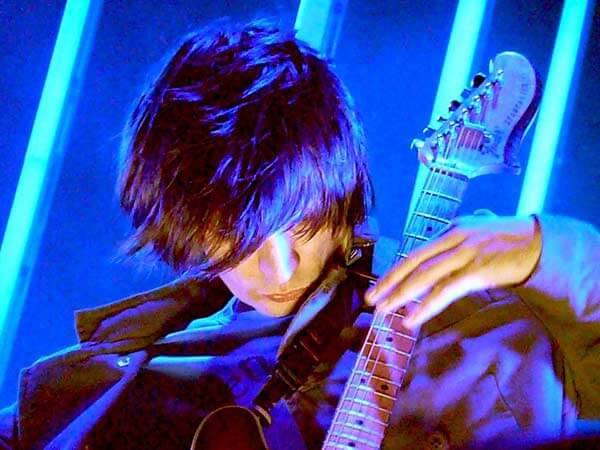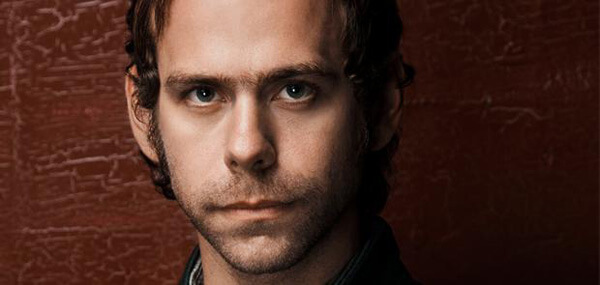 Le Poisson Rogue is hardly a small venue, but March 7, 2014, with André de Ridder conducting the Ensemble LPR, was the first time I’d seen the stage genuinely crammed. Which was appropriate, considering that two of the three composers on the program are better known as rock musicians. Johnny Greenwood’s Suite from There Will Be Blood and Bryce Dessner’s Lachrimae sound like they’re meant to fill an intimate club, not a concert hall. And it’s hard to deny that Bartók’s Music for Strings, Percussion, and Celesta belongs all up in your face, not at a distance. If only every performance of orchestral music happened in the tightest possible space. The harp, piano, celesta and percussion ate a third of the stage while the strings occupied the rest, roughly twenty musicians in all. Any fewer, and the Bartók piece would’ve been impossible. Any more, and the timpani would’ve had to set up at the bar.
Le Poisson Rogue is hardly a small venue, but March 7, 2014, with André de Ridder conducting the Ensemble LPR, was the first time I’d seen the stage genuinely crammed. Which was appropriate, considering that two of the three composers on the program are better known as rock musicians. Johnny Greenwood’s Suite from There Will Be Blood and Bryce Dessner’s Lachrimae sound like they’re meant to fill an intimate club, not a concert hall. And it’s hard to deny that Bartók’s Music for Strings, Percussion, and Celesta belongs all up in your face, not at a distance. If only every performance of orchestral music happened in the tightest possible space. The harp, piano, celesta and percussion ate a third of the stage while the strings occupied the rest, roughly twenty musicians in all. Any fewer, and the Bartók piece would’ve been impossible. Any more, and the timpani would’ve had to set up at the bar.

Jonny Greenwood
De Ridder is the model of a conductor in 2014. His manner with the crowd is relaxed and easy, cracking jokes and telling stories that bring a sense of relief in the wake of such weighty music. Whether using his hands (for Greenwood and Dessner) or a baton (for Bartók), he shakes and flails for dynamic highs and draws down to narcoleptic energy levels for pianissimo. His understanding of the music not only makes him the perfect foil for contemporary composers but also a distinctive interpreter of older material.
It always feels a little unfair to judge film scores when performed alongside self-contained pieces. Greenwood’s first major work as a composer of orchestral music can’t really be critiqued on its own, as it was created as part of a whole (not to say that it can’t be enjoyed on its own). It’s a perfect fit on this program, however. Bartók is a clear influence on Dessner and Greenwood, and pioneered the level of genre-blending that was revolutionary in his time but is now practically required. Greenwood shares some aesthetic commonalities with Dessner, the way he generates gentle clouds of strings, then punctuates them with unsettling extended-technique effects. There’s a deeper connection as well, the way they pack their music so densely with wall-to-wall emotional complexity. Neither offers the listener a chance to catch their breath or find safe ground. Both thrive on bringing you to a place of vulnerability, then blasting you with thought-provoking ambiguity.
You could describe Greenwood as “Post-Romantic with big globs of Penderecki,” but you could also describe Radiohead that way. Greenwood has an immediately identifiable sense of harmony and flow. The tone-cluster sections that embodied the film’s surreal brutality were especially tense in close quarters. Oddly enough, for someone you think of as a groundbreaking musician, Greenwood’s music felt far more conservative than the rest of the program, but again, that’s almost always the case when film music is presented out of context.

Bryce Dessner
By calling his piece Lachrimae, Dessner creates a link to John Dowland’s Renaissance lute song. The connection, while abstract, is palpable. Like Dowland, Dessner manages to be lilting and dirgelike at once. When looking for meaning in the title, there’s more to be found in an analysis of the title, the Latin word for “tears.” The piece is complex and difficult, emotionally. Like Greenwood, Dessner embeds dots of noise in clouds of ethereal harmony, like ghosts in the periphery. There’s an undercurrent of nostalgia. Not a specific nostalgia, just the bittersweet ache of memories half-remembered. It’s not exactly sad, not precisely somber, not what you’d call lonely or depressing. Dessner’s music lives in these pocket universes of variegated textures whose effects on the listener are as profoundly moving as they are impossible to verbalize.
Bartók always sounds fresh, this piece in particular. The “hypnagogic nightmare” vibe of the first movement is far more palpable when the celesta and harp are five feet from you. Programming this work alongside his musical descendants puts Bartók in the context we always should view him in: that of a perpetual modernist. Between his enduring popularity and his inescapable influence, it’s become a cliche to talk about how groundbreaking he was. It feels kind of like pointing out that the Beatles have become somewhat influential. But hearing him next to contemporary composers, in the hands of a craftsman like de Ridder, it’s amazing how it still sounds raw, dangerous, and new.
Le Poisson Rogue perfectly navigates the line between a rock club and more traditional classical venue (also, while I’m hardly a foodie, I quite literally have dreams about their truffle mac and cheese). This was the first time I’d seen their house ensemble, who can hold their own with any chamber orchestra I’ve heard. Under de Ridder’s supervision, they brought a kind of muscular grace to the music. If you’re not already aware of Dessner as a creative force, go listen to everything he’s made, right now. New York has an absurd number of devastatingly good composers, but there is a balance of maturity and abandon in his work that’s painfully rare.
By the way, a lovely recording of this concert can be found here.






















